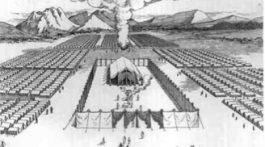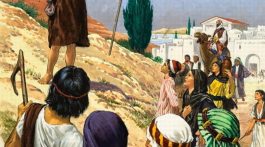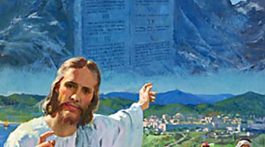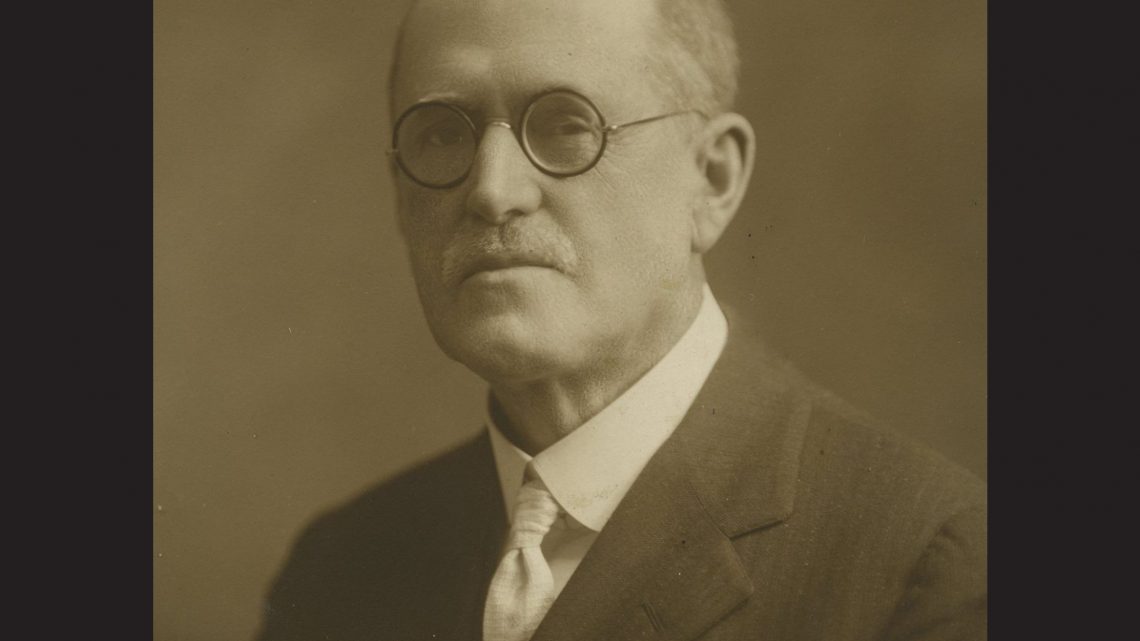This article is the second in a series of five articles on the history of OUTLOOK. To see the other articles in this series, click here.
The Central Advance printed its final issue April 20, 1904, but the impetus that W. A. Colcord started by creating a union-wide publication did not diminish. Colcord’s vision began to be taken up by other unions. Almost exactly two years after the last issue of The Central Advance, on April 3, 1906, the Northern Union Conference launched its first issue of the Northern Union Reaper from Minneapolis, Minnesota. This paper merged several conference newspapers, including the South Dakota Worker, to create a union-wide publication.
The mission of this paper was very similar to that of The Central Advance: “…to inspire hope, faith, and courage in the home and in the field outside of the home. It will give reports of progress, experiences in the field under trial, and victories in gathering the ripened grain.”1 One major difference between the two papers, though, was that the Northern Union Outlook had the backing of the Northern Union Conference Committee, as it was created based on a recommendation made by them. The administration of the Northern Union Conference realized “that a union conference paper is a necessity and should be established.”2
The Reaper has met with favor because of your efforts
C. L. Emmerson, a Minnesota Conference minister and Northern Union Conference secretary who had never held an editing position before, was chosen as editor. Emmerson held the position until April 1907, when he turned it over to T. D. Gibson, whom he referred to as “…a man of extensive experience in editorial work.” Emmerson was humble in his opinion of his own skills, saying, “Whatever degree of success the Reaper has attained is due to your reports and items. The Reaper has met with favor because of your efforts.”3
Emmerson was born July 21, 1867, and grew up Adventist, his father being one of the early adopters of Adventism in Minnesota. He started out as a public school teacher, but at 24 followed a call into ministry. He began in his home conference of Minnesota, but eventually ended up as a missionary in the Bay Islands, Honduras. Only when his and his wife’s health began to decline did he return to the United States, settling in Colorado until his wife passed away.
Upon his wife’s death, Emmerson returned to his home state of Minnesota. It was back in Minnesota that he met and married Nellie Peet. They were married Aug. 5, 1897 in Peet’s hometown of Osakis, Minnesota, by the Adventist Elder W. B. Hill. The wedding was described as a quiet wedding at the residence of the bride’s parents with a cornet band serenading the group.
C. L. Emmerson worked as editor of the Northern Union Reaper during this time in Minnesota. After handing off editorial duties to Gibson, Emmerson continued to work for the Minnesota Conference despite his declining health. He worked as Bible teacher at Plainview Academy from 1913 until 1915, among other positions. In 1917 at the age of 50, Emmerson had an accident which ended his life.

The Northern Union Reaper began publishing April 3, 1906 from Minneapolis, Minnesota. C. L. Emmerson, a minister and conference secretary, was chosen as editor.
The only union without a union paper
While the Northern Union Reaper continued to gain support and readership in the Northern Union Conference, the Central Union Conference leadership realized the need to have a union-wide publication to communicate with the union members. At a joint meeting of the Central Union Conference Committee and representative men from the various states attending the bookmen’s convention in College View, Nebraska (now a neighborhood of Lincoln, Nebraska), on Jan. 22, 1911 it was recommended that a publication be launched for the Central Union Conference. This publication was first printed June 6, 1911 and named the Central Union Outlook.
According to the inaugural issue of the Central Union Outlook, president of the union E. T. Russell stated, “there are so many departments and institutions in our territory that it was imperative that these institutions and departments should have a unifying medium through which to reach people.”4 It was pointed out in its first issue that the Central Union Conference, despite being a strong union, was the only union in the Adventist Church without a union paper. Russell had also been involved in the creation of The Central Advance, and so understood the potential benefits of having a medium of communication for the whole union.
A. T. Robinson, a Canadian-born missionary, pastor, and conference official, was chosen as editor of the paper, along with an editorial staff consisting of educational secretary and Union College president Frederick Griggs, missionary agent C. G. Bellah, and missionary secretary Meade MacGuire. Robinson was a well-known and accomplished Adventist pioneer and missionary. He became a Seventh-day Adventist at 20 when he traveled to Cornish Flat, New Hampshire, to convince his brother Dores of his brother’s mistake in keeping the Sabbath. Instead of succeeding in convincing his brother of his error, Robinson became convinced of the Sabbath as well.
Robinson began his ministry in 1882 doing literature evangelism. He colporteured in several large eastern cities including Boston and New York before he was ordained in 1886. A year later he was elected president of New England Conference.
In 1891, Robinson, his wife Loretta, and their children sailed to South Africa as missionaries, where they spent six years. While in South Africa, Robinson is credited with pioneering the conference organization that the General Conference elected to adopt at the historic 1901 General Conference Session. He was also instrumental in establishing the Solusi Mission, as he was the one who requested Cecil Rhodes, the British businessman, mining magnate, and politician, to give land for the college. In 1898, the Robinsons left Africa and moved to Australia, where they spent the next six years.
Upon returning to the United States, Robinson spent 18 years working as conference president for Nebraska, Colorado, and New England conferences. It was during his time working as conference president that Robinson was chosen as editor for the newly launched Central Union Outlook.
The Central Union Outlook and Northern Union Reaper continued to be published until the Central and Northern Union Conferences voted to merge on Feb. 3, 1932 as a result of a recommendation by the General Conference. At a joint meeting of the Northern and Central Union Conferences in Omaha, Nebraska, it was voted to merge the two unions under the name Central Union Conference, thus merging the two unions’ papers and ending the publication of the Central Union Outlook and Northern Union Reaper.
Sources
- Underwood, R. A. “Announcement: The Reaper.” Northern Union Reaper. Vol. 1 No. 1. April 3, 1906.
- “Announcement: Why This Publication Exists.” Northern Union Reaper. Vol. 1 No. 1. April 3, 1906.
- Emmerson, C. L. “A Line From Brother Emmerson.” The Northern Union Reaper. Vol. 2 No. 5. April 30, 1907.
- Russell, E. T. “General Interest: Why.” Central Union Outlook. Vol. 1 No. 1. June 6, 1911.
- Emmerson, C. L. “In Answer to a Question.” Northern Union Reaper. Vol. 1 No. 5. May 1, 1906.
- “Emmerson, Elder C. L. and Peet, Nellie (Aug. 1897) Marriage.” The Lake Review. Aug. 5, 1897. www.ancestry.com/boards/localities.northam.usa.states.minnesota.counties.douglas/7151/mb.ashx
- “Minutes of the Joint Session of the Central Union and Northern Union Conference,” Feb. 3, 1932, Mid-America Union Conference Archives.
- Van Kirk, M. B. “Obituaries: Elder C. L. Emmerson.” Review & Herald. Vol. 95 No. 6. Feb. 7, 1918.









